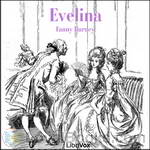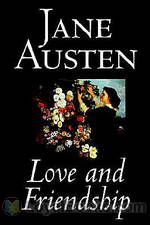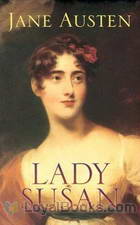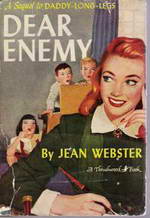|
Books Should Be Free Loyal Books Free Public Domain Audiobooks & eBook Downloads |
|
|
Books Should Be Free Loyal Books Free Public Domain Audiobooks & eBook Downloads |
|
Epistolary Fiction (Correspondence) |
|---|
Book type:
Sort by:
View by:
|
By: Choderlos de Laclos (1741-1803) | |
|---|---|
 Dangerous Connections
Dangerous Connections
Everyone probably has Glenn Close and John Malkovich in mind, but for those who have not seen the movie, this epistolary fiction describes how a young girl, Cécile de Voanges, walks on the road to perdition, and is just a toy in the Vicomte de Valmont's and the Comtesse de Merteuil's hands. Readers:Narrator, Mme de Volanges: Nadine Eckert-BouletCécile de Volanges: SaabMarquise de Merteuil: AvailleVicomte de Valmont: Martin GeesonPrésidente de Tourvel: Elizabeth KlettChevalier de Danceny: Max... | |
By: Hannah Webster Foster (1758-1840) | |
|---|---|
 Coquette, Or The History of Eliza Wharton
Coquette, Or The History of Eliza Wharton
The classic early American epistolary novel about the seduction and ruin of a passionate young woman. Based on the true story of Elizabeth Whitman, whose lonesome death in childbirth in a Connecticut inn sparked widespread discussion and outrage, the novel went through many editions and innumerable printings in the century after its initial publication in 1797. | |
By: Pliny the Younger (61 - ca. 112) | |
|---|---|
 Letters of Pliny
Letters of Pliny
The largest surviving body of Pliny's work is his Epistulae (Letters), a series of personal missives directed to his friends, associates and the Emperor Trajan. These letters are a unique testimony of Roman administrative history and everyday life in the 1st century CE. Especially noteworthy among the letters are two in which he describes the eruption of Mount Vesuvius in August 79, during which his uncle Pliny the Elder died (65 and 66 in this edition), and one in which he asks the Emperor for instructions regarding official policy concerning Christians (Trajan Letter 97)... | |
By: Abdullah Ibn al-Muqaffaʿ (724-759) | |
|---|---|
 Fables of Pilpay
Fables of Pilpay
These moralistic stories within stories date back to the Sanskrit text Panchatantra . They were first translated into Arabic by a Persian named Ruzbeh who named it Book of Kalilah and Dimna and then by Abdullah Ibn al-Muqaffa and later Joseph Harris in 1679 and then remodeled in 1818. Max Mueller noted that La Fontaine was indebted to the work and other scholars have noted that Jeanne-Marie LePrince de Beaumont and John Fletcher were both familiar with the fables. The Fables of Pilpay are a series of inter-woven fables, many of which deploy metaphors of anthropomorphized animals with human virtues and vices. | |
By: Angelina Emily Grimké (1805-1879) | |
|---|---|
 Letters to Catherine E. Beecher in Reply to an Essay on Slavery and Abolitionism
Letters to Catherine E. Beecher in Reply to an Essay on Slavery and Abolitionism
This is a collection of thirteen letters from Angelina Grimké on the subjects of abolitionism and human rights in the United States. | |
By: Anna Bowman Dodd (1855-1929) | |
|---|---|
 Republic of the Future
Republic of the Future
or Socialism a Reality In the year 2050, Wolfgang travels to the socialist city of New York. He writes enthusiastically to his friend Hannevig describing the wonders of the journey and vastness of the city. He then turns his eye and pen to the effects of true equality of the sexes and freedom from work. Unfortunately for the New Yorkers, they do not create the desired utopia but just the opposite. | |
By: Anonymous | |
|---|---|
 Unaddressed Letters
Unaddressed Letters
“I had a friend who loved me;” but he has gone, and the “great gulf” is between us. After his death, I received a packet of manuscript with these few words:—“What I have written may appeal to you because of our friendship, and because, when you come to read them, you will seek to grasp, in these apparent confidences, an inner meaning that to the end will elude you. If you think others, not the many but the few, might find here any answer to their unuttered questionings, any fellowship of sympathy in those experiences which are the milestones of our lives, then use the letters as you will, but without my name... | |
By: Benjamin Franklin (1706-1790) | |
|---|---|
 Silence Dogood Letters
Silence Dogood Letters
As a teenager, Benjamin Franklin apprenticed with his brother James at the shop where The New-England Courant was printed. Since James would not publish any of Benjamin's works, fifteen-year-old Benjamin sent letters to The New England Courant under the pseudonym Silence Dogood. A total of fourteen letters were sent, one each fortnight, between April and December of 1722. (Introduction by Darcy Smittenaar) | |
By: Bram Stoker (1847-1912) | |
|---|---|
 Lady of the Shroud
Lady of the Shroud
As the title suggests, this work does flirt with the supernatural. Yet it is essentially a political novel—a utopian experiment in a fictitious Balkan country, the Land of the Blue Mountains. The story spans the years from 1892 to 1909. It includes a beautiful love story and an adventure tale—a double rescue requiring strength, cunning, and cutting-edge technology. These various aspects are unified by the character of the hero, a purely admirable individual whom we love and admire from the very first and who acquires immense power... | |
By: Edith Wharton (1862-1937) | |
|---|---|
 The Touchstone
The Touchstone
Stephen Glennard's career is falling apart and he desperately needs money so that he may marry his beautiful fiancee. He happens upon an advertisement in a London magazine promising the prospect of financial gain. Glennard was once pursued by Margaret Aubyn, a famous and recently deceased author, and he still has her passionate love letters to him. Glennard removes his name from the letters and sells them, making him a fortune and building a marriage based on the betrayal of another. | |
By: Edna W. Underwood (1873-1961) | |
|---|---|
 Letters from a Prairie Garden
Letters from a Prairie Garden
The "Letters from a Prairie Garden," are genuine letters and not fiction. They went through the mail. An explanatory word about their origin may not be amiss. Some years ago a famous artist came to a certain mid-western city on business connected with his profession. He had an acquaintance who lived in the hotel where the writer lived at that time and with whom he talked over the phone. The writer frequently happened to be talking at the same time, and the wires crossing, he heard me laugh repeatedly, and he nicknamed me "the woman who laughs... | |
By: Eleanor Hallowell Abbott (1872-1958) | |
|---|---|
 The Indiscreet Letter
The Indiscreet Letter
Three fellow travelers on a train enter into a discussion concerning what they would call an ‘indiscreet letter.’ The discussion albeit short, produces some rather interesting revelations during the journey and at journey’s end. | |
By: Elinore Pruitt Stewart (1878-1933) | |
|---|---|
 Letters on an Elk Hunt
Letters on an Elk Hunt
This is a sequel to Letters of a Woman Homesteader in which Elinore Rupert (Pruitt) Stewart describes her arrival and early years on a Burntfork Wyoming ranch in 1909-1913. The letters are written to her elderly friend, Mrs. Coney, in Denver. In the present collection of letters, Elinore describes a lively excursion on horseback and wagon into the Wyoming wilderness during July-October 1914. Her traveling companions are her husband “Mr. Stewart,” their three oldest children, and kind-hearted, opinionated neighbor Mrs... | |
By: Eliza Fenwick (1766-1840) | |
|---|---|
 Secresy, or, the Ruin on the Rock
Secresy, or, the Ruin on the Rock
This is the story of Caroline and Sibella, two female friends. Strong and smart women who try to make it in a man's world while keeping their values and loyalties intact. The only way to do that is to hide a few secrets. Yet secrets cannot remain hidden for ever, and everything has a price. This is both a social novel and a gothic novel. A true page turner with all the elements of a good 18th century novel: a woman locked in an estate, a hidden pregnancy, some politics of marriage, villains, sentimentality and thought provoking philosophy. Summary by Stav Nisser. | |
By: Elizabeth Griffith (1727-1793) | |
|---|---|
 History Of Lady Barton
History Of Lady Barton
This is the story of the three Cleveland siblings: Fanny, the innocent yet very sympathetic sister; Louisa, the strong willed sister whose miserable marriage to Sir William is the center of the novel; and Sir George who tries to get over the loss of his lover by touring the world. Louisa is not an amoral woman, she is beautiful and very lively, values which 18th century society promotes, yet she suffers only affliction from her "respectable" college educated husband. In the main plot, and all the sub plots , the book tests many prominent values of the time and brings to light their negative implications... | |
By: Emily Dickinson (1830-1886) | |
|---|---|
 Emily Dickinson on Death
Emily Dickinson on Death
Emily Dickinson is one of the most intriguing of American poets. Since she grew increasingly reclusive, very few of her poems were published until after her death. This collection includes two letters Dickinson wrote to her friends on the occasion of the deaths of her friend, Mr. Humphrey, and her brother, Austin. The rest of collection consists of her poetry on the subject of death. | |
By: Étienne Pivert de Senancour (1770-1846) | |
|---|---|
 Obermann
Obermann
This is a 1903 translation of Étienne Pivert de Senancour's immensely influential work Obermann. Although it was almost completely ignored by the reading public when it was first published during the period of Napoleonic Wars in 1804, it was rediscovered almost 30 years later by the Romantics, praised by none less than Balzac and George Sand, as well as Franz Liszt and other illustrious persons of that time period. Obermann is an epistolary novel in the form of a journal intime, in which the inner life of the main character is the most important element, rather than the physical action... | |
By: Fanny Burney | |
|---|---|
 Evelina
Evelina
In this epistolary novel, we find a young woman named Evelina, who was raised in rural seclusion until her eighteenth year because of her uncertain parentage. Through a series of harrowing and humorous events that take place in London and an English resort town, Evelina learns how to navigate the complex layers of 18th century society and earn the love of a distinguished and honorable nobleman. This comedy of manners often satirizes the society in which it is set; Evelina is a significant precursor to later works by Jane Austen and Maria Edgeworth, whose novels explore many of the same issues. (from Evelina’s wikipedia entry, modified by ettelocin) | |
By: Frances Moore Brooke (1724-1789) | |
|---|---|
 History of Emily Montague Vol 1 (Dramatic Reading)
History of Emily Montague Vol 1 (Dramatic Reading)
The novel takes place 10 years after the Battle of the Plains of Abraham in 1759 when Quebec becomes a British colony. Written as a collection of letters, the story follows the relationships between Edward Rivers (a British soldier), his friend, John Temple (rather a cad), Emily Montague (a young British woman), and her dearest friend, Arabella Fermor (a flirtatious drama queen). Giving glimpses into the new frontier discoveries of Canada, one not only peeks into the personal relationships of these characters but gets swept away by the enticing descriptions of the "new world." This is Volume 1 out of 4. | |
By: Gabriel-Joseph de Lavergne (1628-1684) | |
|---|---|
 Letters of a Portuguese Nun
Letters of a Portuguese Nun
The Letters of a Portuguese Nun (Les Lettres Portugaises) were first published anonymously in Paris in 1669. The five passionate letters in book form were a publishing sensation since their appearance, with five editions in the first year, followed by more than forty editions throughout the 17th century. A Cologne edition of 1669 stated that the Marquis de Chamilly was their addressee, but, aside from the fact that she was female, the author's name and identity remained unknown. The letters were... | |
By: George Horace Lorimer (1869-1937) | |
|---|---|
 Letters from a Self-Made Merchant to His Son
Letters from a Self-Made Merchant to His Son
Being the Letters written by John Graham, Head of the House of Graham & Company, Pork-Packers in Chicago, familiarly known on 'Change as "Old Gorgon Graham," to his Son, Pierrepont, facetiously known to his intimates as "Piggy." George Horace Lorimer was an American journalist and author. He is best known as the editor of The Saturday Evening Post. | |
By: George MacDonald (1824-1905) | |
|---|---|
 The Wise Woman
The Wise Woman
George MacDonald was an influential Scottish author, poet, and Christian minister. MacDonald’s works (particularly his fairy tales and fantasy novels) claimed the admiration of such authors as J. R. R. Tolkien, C. S. Lewis, and Madeleine L’Engle. The Wise Woman fairy tale was one of MacDonald’s more popular works. This delightful story describes how a woman of mysterious powers pays visits to two very different young girls: one a princess, the other a shepherd’s daughter. Neither girl is left unchanged by the startling events that are unleashed as a result: and the reader is confronted by astonishing fairy-worlds in which the girls are forced to choose between good and evil... | |
By: Georgiana Cavendish, Duchess of Devonshire (1757-1806) | |
|---|---|
 Sylph
Sylph
Georgianna Cavendish, duchess of Devonshire was one of the leading ladies of her time. There for, her novel, which contains many autobiographical plots, has been published anonymously. The author was thought to have been Sophia Briscoe, a contemporary novelist, or Fanny Burney, author of Evelina which was published at about the same time. However the duchess admitted to writing the story of Julia Grenville, a welsh beauty who marries an older man. She very quickly discovers her husband is a libertine and a rake, and that she has no idea how to behave in London society... | |
By: Honore de Balzac (1799-1850) | |
|---|---|
 Letters of Two Brides
Letters of Two Brides
An epistolary novel written by renowned French novelist Balzac, who is regarded as one of the founders of realism and a significant influence to later novelists, the novel focuses on two young women who preserve their friendship through regular correspondence. Originally published in the French newspaper La Presse in 1841 as a serial, the piece later became a part of Balzac’s distinguished novel sequence La Comédie Humaine, or The Human Comedy. Furthermore, Letters of Two Brides surrounds intriguing topics including love, romance, confusion, duty, and the complexity of relationships... | |
By: Jan Hus | |
|---|---|
 Letters of John Huss
Letters of John Huss
Personal correspondence of Bohemian religious reformer John Huss from 1411 when he was exiled from Prague through his death by burning as heretic in 1415 by order of the Council of Constance. These were first published in 1536 by the German Protestant reformer Martin Luther and his introduction is included here. - Summary by Rom Maczka | |
By: Jane Austen (1775-1817) | |
|---|---|
 Love and Friendship
Love and Friendship
Begun when she was just eleven years old, Love and Friendship is one of Jane Austen's stories that very few readers may have encountered before. Austen experts feel that this story was written, like many others, only for the pleasure of her family and friends. It is scribbled across three notebooks, in childish handwriting, and the complete work is thought to have been written over a period of six or seven years. It is dedicated to one of her cousins, whom she was very close to, Eliza de Feuillide... | |
 Lady Susan
Lady Susan
An epistolary novel, Lady Susan is an early work by Austen that was posthumously published in 1871. The short novel focuses on the self-serving eponymous anti-heroine, as she cunningly maneuvers her way through society in search of a wealthy husband for both her daughter and herself. Disregarding anything but her own selfish goals, Susan employs her charms to lure men and draw them into her web of deceit, no matter their age or status. Exploring issues including morals, manners, self-indulgence, malevolence, and social machinations, the relatively short novel is sure to fascinate with its atypical form... | |
 Letters of Jane Austen
Letters of Jane Austen
This recording includes a selection of Jane Austen's letters, edited by Susan Coolidge and chosen from the collection of Austen's great-nephew, Edward, Lord Brabourne. The letters are mostly addressed to Austen's sister Cassandra, with whom she was very close. There are also some letters written to two of her nieces, Anna Austen Lefroy and Fanny Knight. They include some references to her published work, including Sense and Sensibility (abbreviated "S and S"), Pride and Prejudice (also called First Impressions, or P and P), Mansfield Park ("MP") and Emma... | |
 Love and Freindship, and Other Early Works
Love and Freindship, and Other Early Works
This book draws together some of Jane Austen's earliest literary efforts. It includes "Love & Freindship" and "Lesley Castle" both told through the medium of letters written by the characters. It also contains her wonderful "History of England" and a "Collection of Letters" and lastly a chapter containing "Scraps". In these offerings, we may see the beginnings of Miss Austen's literary style. We may also discern traces of characters that we encounter in her later works. G. K. Chesterton in his preface, for example, says of a passage in Love and Freindship; "... | |
By: Jean Webster (1867-1916) | |
|---|---|
 Dear Enemy
Dear Enemy
Dear Enemy is the sequel to Jean Webster’s novel Daddy-Long-Legs. The story as presented in a series of letters written by Sallie McBride, Judy Abbott’s college mate in Daddy-Long-Legs. Among the recipients of the letters are the president of the orphanage where Sallie is filling in until a new director can be installed, his wife (Judy Abbott of Daddy-Long-Legs), and the orphanage’s doctor (to whom Sallie addresses her letters: “Dear Enemy”). | |
By: Johann Wolfgang von Goethe (1749-1832) | |
|---|---|
 The Sorrows of Young Werther
The Sorrows of Young Werther
The Sorrows of Young Werther (German, Die Leiden des jungen Werther, originally published as Die Leiden des jungen Werthers) is an epistolary and loosely autobiographical novel by Johann Wolfgang von Goethe, first published in 1774. The story follows the life and sorrows of Werther after he falls desperately in love with a young woman who is married to another. A climactic scene prominently features Goethe's own German translation of a portion of James Macpherson's Ossian cycle of poems, which had originally been presented as translations of ancient works, and was later found to have been written by Macpherson. (Introduction by Wikipedia and Barry Eads) | |
By: John Muir (1838-1914) | |
|---|---|
 Letters to a Friend, Written to Mrs. Ezra S. Carr, 1866-1879
Letters to a Friend, Written to Mrs. Ezra S. Carr, 1866-1879
When John Muir was a student in the University of Wisconsin he was a frequent caller at the house of Dr. Ezra S. Carr. The kindness shown him there, and especially the sympathy which Mrs. Carr, as a botanist and a lover of nature, felt in the young man's interests and aims, led to the formation of a lasting friendship. He regarded Mrs. Carr, indeed, as his "spiritual mother," and his letters to her in later years are the outpourings of a sensitive spirit to one who he felt thoroughly understood and sympathized with him... | |